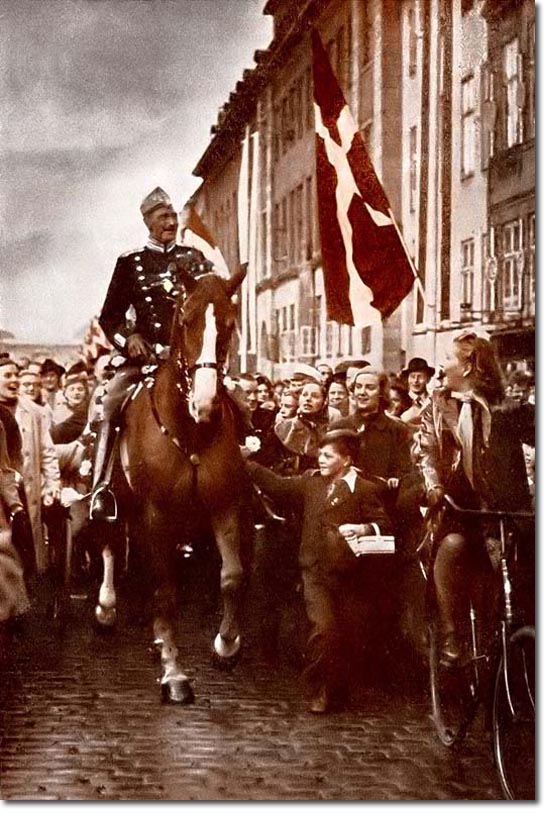|
|


|
|
When King Frederik VIII died in May 1912 he was succeeded by his son Christian. Christian Carl Frederik Albert Alexander Vilhelm was born on 26th Sep 1870 at Charlottenlund Palace near Copenhagen. Christian was not a liberal monarch like his father, rather he was an authoritarian figure who almost destroyed the Danish monarchy with his anti-democratic style of rule.
The Easter Crisis of 1920 was the decisive event of his reign. The region of Schleswig was always a disputed territory between Denmark and Germany, so when World War 1 ended it seemed a good time for Denmark to claim it as Danish. The population of North Schleswig was predominantly Danish but central and southern Schleswig were mostly German. A plebiscite was held which confirmed this and North Schleswig was awarded to Denmark while central and Southern Schleswig was given over to Germany. But nationalists in Denmark thought that the predominantly Danish city of Flensburg, in central Schleswig should be returned to Denmark. The King held this view and ordered Prime Minister Zahle to include the city in the reunification process. Zahle refused and a constitutional row broke out in which the cabinet was dismissed by King Christian. There was a revolutionary atmosphere in Denmark for several days until the King backed down. The King managed to redeem himself during World War II. Denmark was invaded and occupied by the Nazis in April 1940 and Christian remained in the country instead of hiding abroad. Up to this point he was not a popular figure but he showed a coolness towards Hitler and represented the Danish people's sense of defiance. It is generally thought that he wore the Mogan Dovid (Star of David) yellow badge to display his support for the Jewish people. But in fact he only encouraged the Danish people to wear them if they were forced by the Nazi occupation to expel their Jews. His popularity was given a sharp rise because of this as well as his daily rides through the streets on his horse, unaccompanied except by cheering crowds. The horse riding that made him latterly so popular was, ironically the cause of his death. He fell from the animal on 19th Oct 1942 and was an invalid for the rest of his life. He died on 20th April 1947 and was succeeded by his son Frederik IX. |
Regimental Details | Commander in Chiefs
Armed Forces | Art and Culture | Articles | Biographies | Colonies | Discussion | Glossary | Home | Library | Links | Map Room | Sources and Media | Science and Technology | Search | Student Zone | Timelines | TV & Film | Wargames